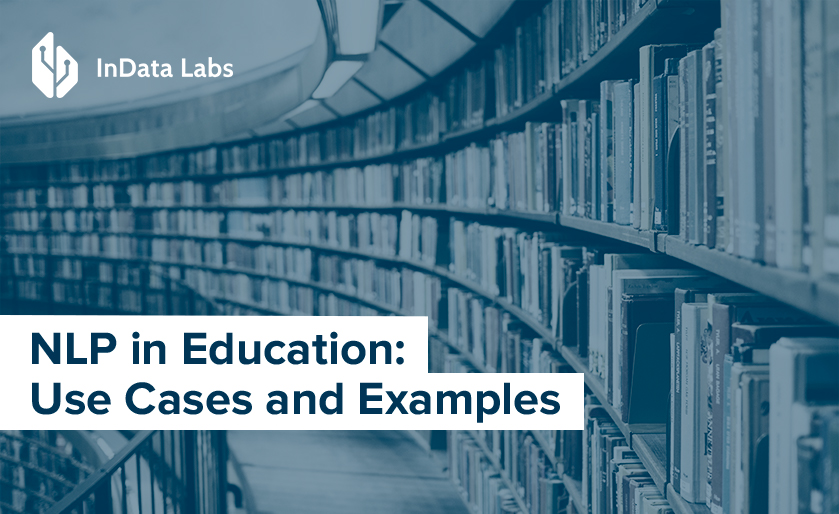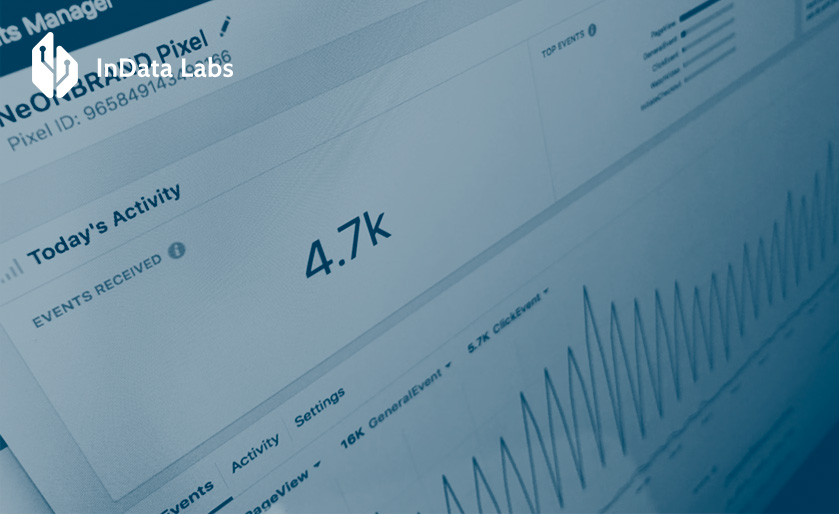According to multiple analyst estimates, a majority of data (from 80% to 90%) is unstructured information. Most of it is generated from conversations with customer service representatives and on social media platforms. That’s an enormous untapped resource that can give an edge to companies that figure out how to leverage it.
A lot of data about the companies can be found on review platforms such as Yelp or TripAdvisor and Q&A platforms such as Quora, as well as other Internet platforms. Organizations are turning to Natural Language Processing (NLP) technology to derive understanding from the countless unstructured data available online and in call logs.
Here is the list of the most common business applications of natural language processing technology that help businesses gain a competitive edge and improve workflow in multiple directions:
1. Information extraction
Information extraction is the task of automatically extracting structured data from unstructured or semi-structured machine-readable texts. Full-text extraction of Internet content usually includes entity extraction (names, places, sums of money, keywords), text categorization (by sentiment, by industry, by purpose or by other necessary categories), clustering (identifying main and new topics), fact extraction (allows to fill databases with structured information for analysis, visualization, and alerts), relationship extraction (is used to fill out graph databases to explore real-world relationships). Let’s see what it means in real cases.
Many business or product decisions are driven by information found in the news, on social media and on numerous Internet platforms. Getting valuable and structured information from these sources is not easy.
The majority of such content is present in the form of text, infographics, and images. The main natural language processing application is in taking these texts, analyzing and extracting the related information in one of the formats that can be used in a decision-making process. For example, news of a merger between companies can have a big impact on trading decisions. The speed at which the merger, players, and prices can be incorporated into a trading algorithm can have profit implications in millions of dollars.

Source: Unsplash
2.Text classification
Text classification implies assigning a predefined category or label to sentences, paragraphs, text reports, or other forms of unstructured text. Some use cases are sentiment analysis, natural language inference, and assessing grammatical correctness.
Tapping into text classification solutions, businesses gain an upper hand in multiple directions, among which we can mention:
Incoming message sorting
Correct classification of incoming messages can remarkably increase your productivity and inform you of promotional messages and customer requests.

Source: Unsplash
Lead scoring
At this stage, all requests are ranked according to several indicators that assess customers’ level of interest and willingness to close the deal. Armed with this knowledge, businesses can provide relevant offers to each customer.
Urgency identification
Some client requests have to be handled as a priority. Text classification helps determine the level of urgency and meet all deadlines.
3. Sentiment analysis
Sentiment analysis solutions are used to extract meaning from millions of messages. They identify sentiment among one or several sentences in the post in order to measure overall public opinion on a particular brand or event. The emotion in such posts might not be explicitly expressed, or it can be mixed, and sentiment analysis solutions have to cope with this issue. Sentiment analysis helps companies with the following tasks:
- sentiment analysis as a competitive advantage
Knowing the general sentiment of your company’s audience doesn’t give you much, but modern sentiment analysis solutions allow comparing your indicators to those of your competitors. With accurately adjusted text categorization, companies get valuable information about aspects of their business they need to improve, and what exactly does not satisfy their customers.
- sentiment analysis for better customer experience

Source: Unsplash
Sentiment analysis provides companies with much-needed assistance to stay responsive to their customers. Companies have long depended on data from customer surveys, call centre interactions and focus groups. Such data was structured, kept in one place and handled through BI applications to help in improving customer service and product enhancement. Such an approach is very slow and doesn’t allow acting in a proactive manner.
The situation has radically changed with the emergence of social media and various online platforms, where the majority of companies’ customers, both satisfied and furious, are dwelling. And this is their opinion that counts and shapes brands’ perception and sentiment. Sentiment analysis solutions allow for quick analysis of large amounts of data and address potential issues.
- sentiment analysis for adequate brand perception
Brands are not defined by their products and services. The fame that builds a brand majorly depends on online marketing, social campaigns, and the performance of customer support services. Keeping past sentiments in mind brand managers can constantly improve their performance and develop more appealing branding techniques.
4. Email filtering
Today, emails are approved as a medium of communication officially, as it considerably increases the efficiency of communication. Still, emails are vulnerable to cyberattacks through suspicious messages. A must-have application of natural language processing in artificial intelligence, email filtering fulfils a spam detection task, which is also in sentiment analysis as a pre-processing technique.
Both inbound and outbound email traffic is filtered. Inbound email filtering scans incoming messages and classifies them into categories. (spam, malware, adult, virus, impostor, suspicious links, and others).
Outbound email filtering uses the same algorithm to scan messages before delivering to evade potential harm to the receiver. This is how social media giant Facebook (now Meta) effectively removed 1.8 billion pieces of spam from their platform in the first quarter of 2022 and 734 million – in the second one.
5. Semantic search
The way people consume information has dramatically changed in the last two decades. It wasn’t long ago when we turned to libraries, dictionaries, phone books, and paper newspapers for information. Now we simply turn to the web for answers. Answering more complex questions could take days, but now we get the answers in mere seconds.
The accuracy of such answers majorly depends on how “smart” is the search. This is why the best search engines are now powered by natural language processing technology. It allows providing the information requested by a user rather than making him go through all the related keyword results.
Semantic search engines can already be found in browsers, smartphones, E-commerce platforms, corporate programs such as CRMs, and mobile applications, you name it.

Source: Unsplash
The number of long-tail search requests on the Internet is increasing every year. This means that consumers are getting used to massively utilizing semantic search engines, and the applications and platforms that still use old-fashioned keyword search engines will continue missing out on potential sales.
6. Question answering
Modern search engines can supply us with lots of useful information, but when it comes to answering really specific questions asked by humans, the answers are still quite primitive. This is where chatbots are gaining trust and popularity. Gartner forecasts say chatbots will have become the fundamental customer service channel for a quarter of organizations worldwide by 2027. Chatbots can provide automated, real-time responses to simple customer-service problems and questions.
Research around question-answering solutions is based on dealing with a wide range of question types including fact, list, definition, how, why, hypothetical and other types.

Source: Unsplash
QA solutions can be divided into closed-domain question answering and open-domain ones. Closed-domain question answering deals with questions under a specific domain, and it can be seen as an easier task because natural language processing systems can exploit domain-specific knowledge frequently formalized in ontologies. Alternatively, closed-domain might refer to a situation where only a limited type of questions is accepted, for example, questions asking for descriptive rather than procedural information.
Open-domain question answering deals with questions about nearly anything, and can only rely on general ontologies and world knowledge. On the other hand, these systems usually have much more data available from which to extract answers.
7. Text summarization
Suppose you need to find out the current trend of the industry from various articles, track your competitor’s content, or extract data from financial graphs, automatic summarization helps you succeed in each of the goals mentioned.

There are two ways a text can be summarized – extractive and abstractive. The first extracts words and phrases from the original text to create a resume. The latter studies an internal linguistic representation to create a human-like representation paraphrasing the original text. Automatiс summarization works as follows:
- The frequency with which a word appears in a full-text document is determined
- The 100 most common words are saved and sorted out.
- Each sentence is evaluated by the number of commonly used words, putting more weight on the more common word.
- The first X sentences are sorted according to the position in the original text.
8. Speech recognition
Another application of AI in natural language processing is, speech recognition technology converts the voice signal into digital information (text data, for example). This is a complex multistage algorithm, so we will describe the essence of its algorithms.

Businesses can benefit from speech recognition in multiple ways, including:
- processing of customer requests;
- automation of outgoing marketing campaigns in call centres;
- creating documents/messages by dictation;
- data entry in corporate applications;
- converting voice messages to text;
- minutes of meetings.
Speech recognition and its sub-system voice recognition are embedded in virtual assistants and operating systems, smart speakers and other devices of the kind. It is also used in chatbots, automatic order services, automatic generation of subtitles for videos, voice input in phones, and management of smart houses.
9. Machine translation
The scope of machine translation is becoming wider every day, as the machine translation market is expected to expand at over 30% CAGR from 2022 to 2030. It and can be applied to numerous businesses with an increasing degree of accuracy, including media or legal translations. Machine translators use machine learning algorithms and NLP for automatic translation from one natural language to another.
There are two types of translation software: machine translation (MT) which generates translations totally by computer without human touch (Google Translate, for example) and computer-aided translation (CAT) software which helps professional translators improve the quality and speed of translation.

Source: Unsplash
CAT, in its turn, is divided into three types of systems:
- The rule-based system contains programmed information that dictates how a word or phrase in the source language should read in the target language.
- The statistical system analyzes existing translations developed by humans to produce their translations.
- The neural system whose key feature is learning from each translation task and improving upon further translations.
MT can reduce costs remarkably as you save on human resources. What’s more, the automatic translation of high-volume texts increases the overall speed of translation. If you have a worldwide customer base, MT comes in handy for translating their reviews and identifying your brand reputation.
10. Auto-correct
Auto correction is programmed to correct spellings and errors while typing text. It is completely based on NLP that corrects the incorrect words in the following way:
- If a word is not found in the dictionary, it is flagged as incorrect;
- Identifying how many operations away the typed word is from any other (this is achieved by using such edits as inserting, deleting, switching and replacing);
- Comparing the words to a known dictionary and leaving out those that are absent in the dictionary;
- Calculating word probabilities and finding the most likely word from the final list.
Auto-correct has been used for a while and has become an indispensable feature for writing any piece of text. It facilitates writing articles, blog posts, documents, and messages increases speed and accuracy and helps us evade awkward typos or mistakes. In addition, using an advanced version of this NLP solution in education can help improve writing and provide actionable advice.
Things to consider
Implementing natural language processing applications is associated with two major challenges. The first one is that there is no universal domain-independent NLP solution. A solution that works for the financial industry will not work for a gaming company. AI text analysis solutions need to be trained and customized for each particular case.
The second challenge is that it is hard to predict how long training will take, how accurate the results will be, and how accurate they have to be to deliver business benefits.
Overcoming these challenges will help NLP service providers gain more and more trust among their clients, meanwhile using natural language processing in AI for creating seamless and interactive communication between humans and machines will continue to be a top priority for today’s natural language processing, its applications and products.
Work with InData Labs on your NLP project!
Schedule an intro call with our data science experts to explore your product and find out if we can improve its performance.



